Distilling 101, Whiskey
What Is The Best Grain For Making Whiskey? (Whiskey Explained!)
*** Please be advised that it is illegal to distill spirits at home in most countries. This guide is for informational purposes only. To find out if distilling is legal in your country, check out our article: Is Home Distilling Legal In My Country?.***
Whiskey is defined as a distilled drink made from the fermentation of malt.
But do you know the difference is between a Blended Scotch Whisky and a Single Malt Scotch?
Curious what makes a Tennessee whiskey, different from a bourbon, or a rye?
It all comes down to the grains.
In this article, we’re going to talk about the role grain plays in the whiskey making process, and explain the best grains from making whiskey at home.
Table of Contents
Is it whiskey or whisky?
You may have noticed before that sometimes it’s spelled with an e at the end and other times without it. When using whiskey or whisky, it will depend largely on where the spirit has been produced. In Ireland and the United States it is spelled with an ‘e’ as in whiskey, while in Canada, Japan, Scotland, and other parts of the world, it is spelled without the ‘e’ as in whisky.
What Are The Different Types Of Whiskey?
There are five types of whiskey that you need to know about. These whiskies are divided by region.
1. Scotch Whisky
In order for a whisky to qualify as a scotch whisky, it must be made from malted barley, be made in Scotland, and be aged in oak barrels for no less than three years. There are five regions in Scotland responsible for the production of whisky:
- Lowland
- Highland
- Islay
- Speyside
- Campbeltown
Scotch whisky is twice distilled and whiskey from this region of the world varies from light, fruity, and spicy to smokey and peaty.
2. Irish Whiskey
An Irish whiskey is light and fruity. Irish whisky is triple distilled in a copper pot. Irish whiskey is divided into five subcategories:
- Single Malt, which is made in a single distillery from malted barley.
- Grain whiskey is produced in a column still and made with either corn or grain.
- Single grain whiskey combines a few different grains such as corn, wheat, or rye and is made in a column still.
- Blended whiskey is a blend of different types of whiskey, colorings, flavors, and grains.
- Single Pot Still includes a blend of unmated and malted barley.
3. American Whiskey
This type of whiskey is aged in new charred oak barrels. In addition, the alcohol volume remains under 80%. American whiskies are sweeter and less oakey than their European counterparts. There are six categories of American whiskey:
- Bourbon, which must be made in the USA and must contain at least 51% corn mash in order to be labeled as a bourbon.
- Tennessee whiskey is put through charcoal filtering during the fermentation and aging process as this helps to soften the flavor. It must also contain 51% corn mash to be considered a true Tennessee whisky.
- Rye whiskey must contain at least some rye mash and it must be distilled to contain less than 80% alcohol.
- Wheat whiskey must be made of at least 51% wheat mash in order to qualify as wheat whiskey.
- American single malt is a relatively new category in American whiskey and can be identified by its distinct smokey, honey, and aromatic notes.
4. Japanese Whisky
In terms of history, Japanese whisky is relatively new to the scene compared to other regions that have produced whisky for millennia. Nonetheless, Japanese whisky has still made a name for itself in the world arena due to its high quality. It was designed to resemble Scotch whisky and also uses many of the same distillation methods. Whisky from this region can be described as being very delicate and smooth with notes of honey.
5. Canadian Whisky
Canadian whisky must be aged in oak barrels for no less than three years. Due to the high percentage of corn found in Canadian whisky, you may find it to be a lot sweeter and more smooth than most other types of whisky. The majority of Canadian whiskies are made using rye or corn but are also known to feature wheat or barley.
How To Drink Whiskey
Whiskey can be served neat, on the rocks, or as part of a cocktail or mixed drink.
When served neat, the whisky is served without ice and is not chilled. It is meant to be sipped to enjoy the flavor, aroma, and richness of the whiskey.
When served on the rocks, the whiskey is poured over a single or several ice cubes and also enjoyed by sipping.
Alternatively, it can form part of a mixed drink such as a whiskey sour, or a cocktail such as a Manhattan cocktail.
What Type Of Grain Is Used To Make Whiskey?
When it comes to whiskey, the secret lies in the grains that are used to make the whiskey. There are four main types of grain that may be used in the production of whiskey. Some types of whiskey may only contain one type of grain, while others may contain a variety of grains. These are;
- Corn
- Barley
- Rye
- Wheat
1. Corn
The use of corn in the production of whiskey was introduced by the Americans somewhere in the mid-1700s. Corn is the basis from which bourbon is made. In fact, in order to be considered a bourbon, the whiskey must contain a minimum of 51% corn and must also be aged in new, charred oak barrels.
But bourbon is not the only type of whiskey that requires corn as its foundation. Several other types of whiskey are made with corn. While corn has been widely credited for the sweet flavor found in bourbon, it is in fact the charred oak barrels that lend bourbon its sweet flavor.
A corn whiskey is known as an easy drinking spirit that is widely recognized for its creamy flavors, sweet honey and brown sugar notes, with spicy, chocolate, and toasted marshmallow undertones.
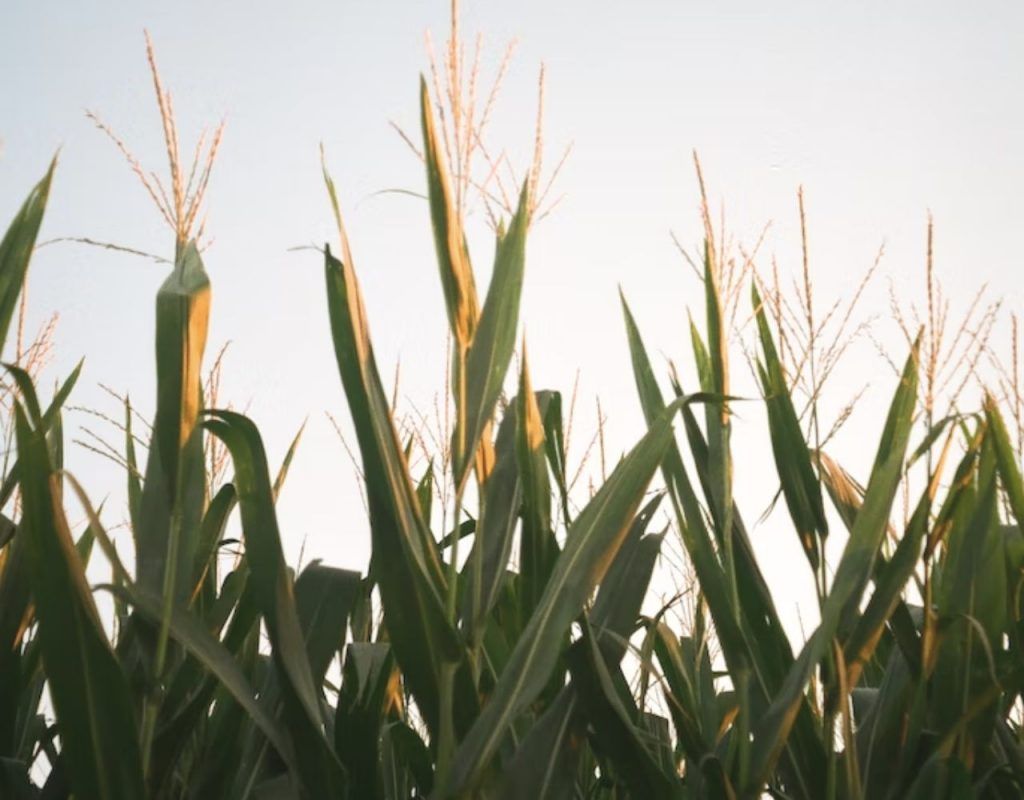
2. Barley
Barley has been noted as the main ingredient in some of the first whisky ever produced. Barley is predominantly used in the making of scotch whisky. The majority of barley whisky is malted and often dried with peat. Malted barley is credited for the nutty, smokey, or toasted flavors in scotch whisky.
Traditionally, scotch whisky is aged in old sherry or port wine barrels. The reason for this is that scotch is known for having a strong flavor. Aging the scotch in these barrels helps to soften the flavor. In addition, these sherry and/or port wine barrels add the notable fruity flavors to scotch whisky.
Other flavors to look forward to in whisky produced with barley include toasted caramel, dusty leather, and dried fig among other notes.
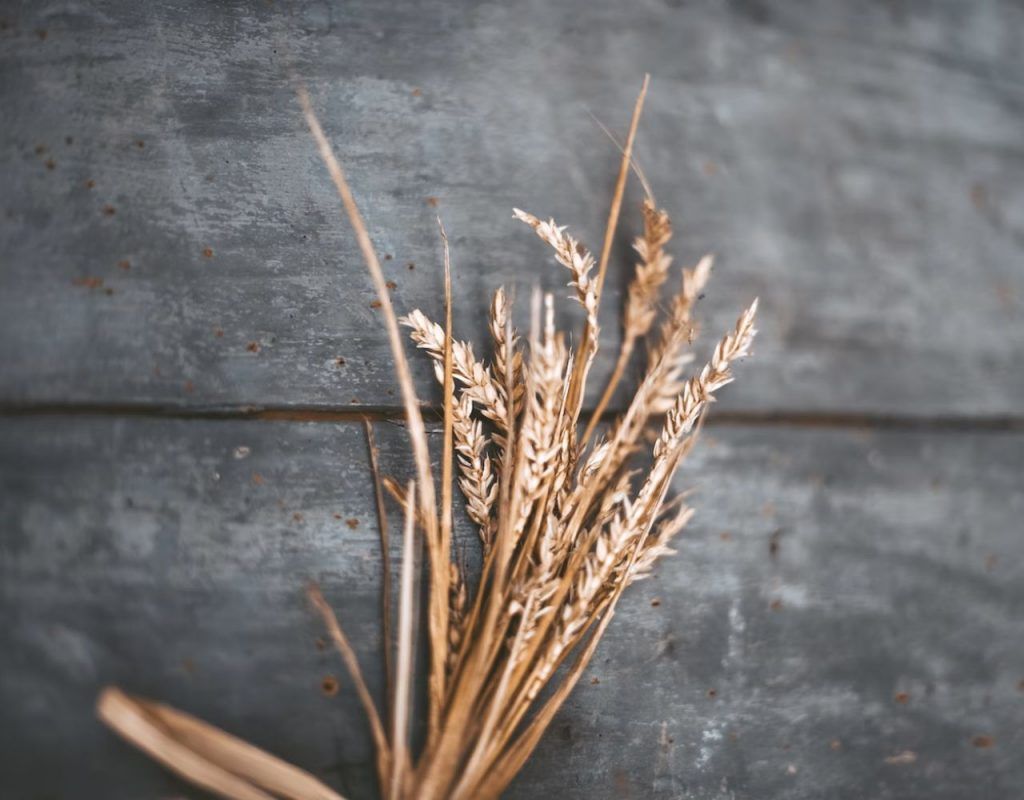
3. Rye
Rye whiskey originates out of Pennsilvania. Rye whiskey has a distinct spicy flavor to it. Rye whiskey is similar to corn whiskey in terms of dried and ripe fruit flavors. It has a rich, nutty, and spicy taste that makes it quite unique from other whiskies.
Rye whiskey must contain a minimum of 51% rye as well as be aged in charred American oak barrels. You may find that many American rye whiskies contain higher amounts of rye. This is to add more spiciness to the whiskey.
Some common notes found in rye whiskey include star anise, black pepper, and even rye bread.
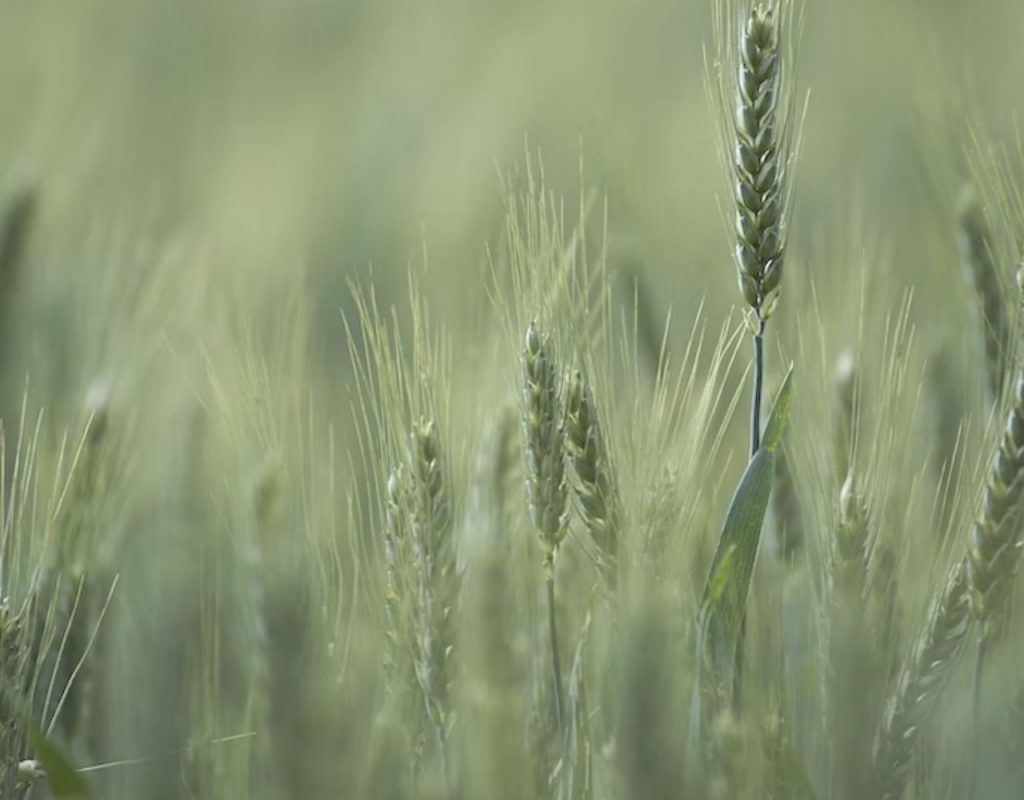
4. Wheat
Most of the wheat whiskies are produced in the United States. While wheat was never a popular ingredient in whiskey, it seems to have gained popularity in recent years.
A wheat whiskey is distinctly smooth with some well known flavors including toffee, vanilla, dried berries, honey, and some spice. It is by nature a softer and more gentle whiskey on the palate.
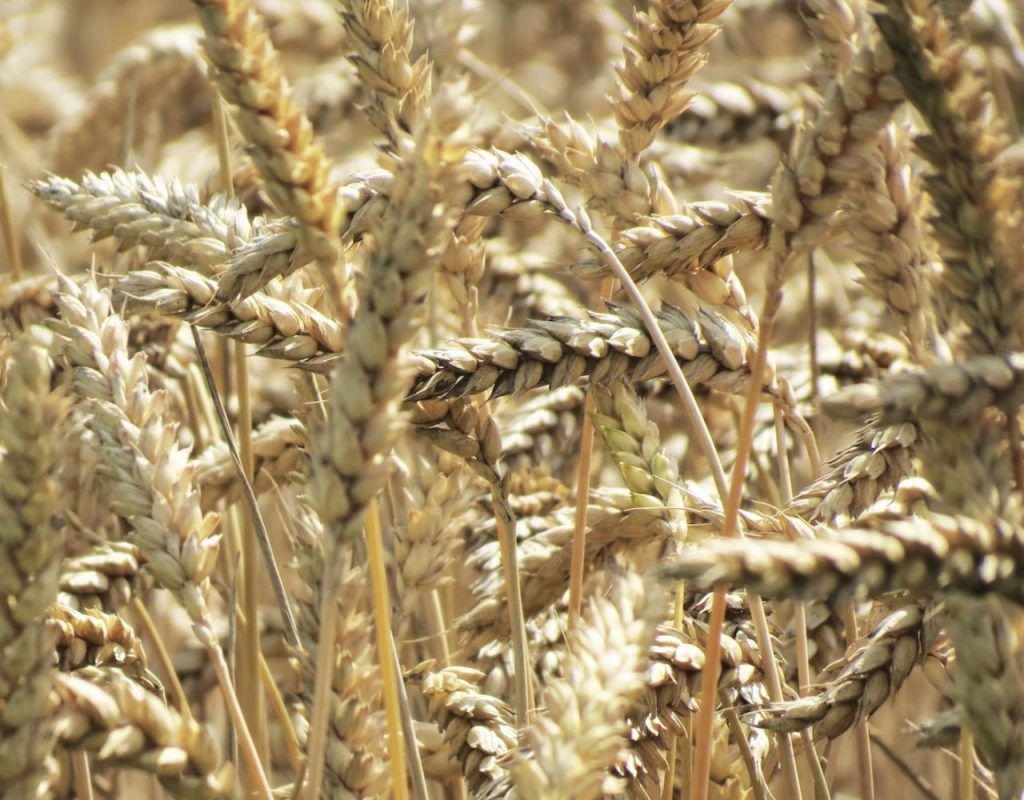
What Do We Mean By Grain Bill?
A grain bill is sometimes also referred to as a malt bill. The grain bill is a list of starchy ingredients used during the mashing and fermentation process. Every whiskey has a specific grain bill. This is a very important factor in the production process as the mash bill of each type of grain adds a lot of flavor to the end product.

The Best Grains To Make Whiskey:
While different grains are used to produce different types of whiskey, there is no doubt that certain types of grains are easier to use and produce superior products than other types of grains. But it also comes down to what exactly it is that you want to produce.
1. Barley
Barley is probably one of the most important grains used in whiskey worldwide. And one of the oldest ingredients used in making whiskey.
In addition, barley is one of the grains that is most often used in making alcohol. All whiskies have at least some barley in them. Barley dictates the final product. It is most noted for its strong taste. It is easily categorized as one of the best types of grain for making whiskey.
Malted Barley:
Malted barley is probably one of the most popular ingredients in whiskey. Malting is a process by which grains are sprouted in order to produce enzymes. The enzymes then transform the long-chain carbohydrates into simple sugars. These simple sugars are then fermented using yeast in order to transform the simple sugars into alcohol. Malted grains are possibly the most important grain used in most whiskies.
Unmalted Barley:
There’s an interesting story behind unmated grains. During the mid-1800s, a tax was levied in Ireland on malted barley. In an attempt to evade tax, distillers altered their recipe to incorporate large portions of unmated barley. This type of barley brings a light, sharp and often sour fruity taste to the whiskey while also increasing the cereal and grain qualities.
Two Row Barley:
It received this name because the head or ear of the barley contains two rows. Delivers enzymes but not as much as 6 row. 2 Row is known for creating a fuller and maltier flavor in the final product. However, 2 row grain does contain less carbohydrates as well. It is more commonly used in producing beer.
Six Row Barley:
It’s name is derived from the fact that the ear or head of the barley contains six rows of seeds. This type of barley contains more protein but less starch than 2 row barley. This type of barley produces more enzymes, which means that more adjuncts can be used, such as maize or rye. It is most popular in American whiskies and bourbons.
How does barley affect the taste of whiskey?
Adding malt to whiskey ensures a nutty, toasted, and smokey flavor profile is added to the whiskey. Most whiskies produced around the world contain malt. Unmalted barley is equally popular in whiskey making as it adds sour and sweet flavors to whiskey such as lemon and apple.
Scotch – Scotch whiskey obtains its flavors from the grains that are used to produce it. The primary grain in scotch is barley, which is malted, after which it is heated over a peat fire.
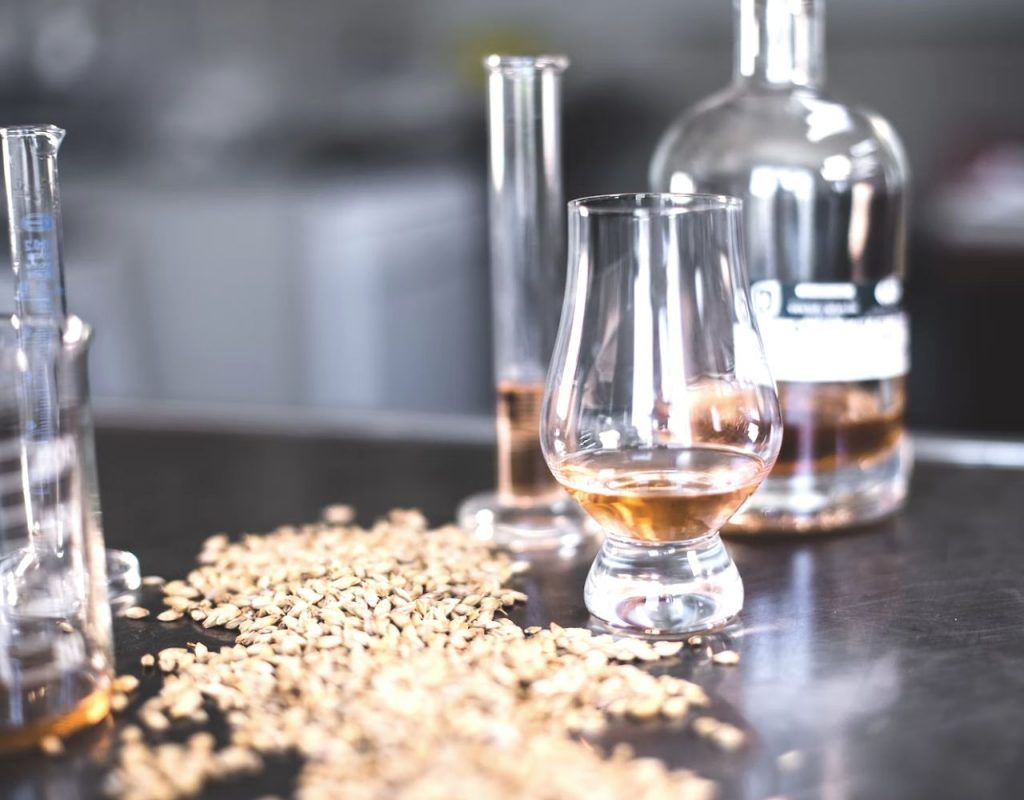
2. Corn
Corn is considered to be the top choice of American grains and was introduced into whiskey making in the mid-1700s. It forms the basis of all bourbons.
Bourbon Whiskey
All bourbons must contain a minimum of at least 51% corn. Bourbons are either not aged or aged in used barrels. Bourbons are known for their rich, sweet flavors derived from corn grains. These whiskies are often noted as having a rich, syrup-like taste.
Tennessee Whiskey
Corn is the primary grain in Tennessee whiskey. The marshbill in Tennessee whiskey is that it must contain a minimum of at least 51% corn. It is the corn in Tennessee whiskey that makes it a smooth, easy drinking whiskey.
How corn affects the flavor of whiskey?
Typically, corn does not produce any strong flavors, in whiskey, by itself. It is often accompanied by other types of grains in order to impart flavor to the whiskey, such as rye or wheat.
3. Quinoa
This is a relatively new grain in the whiskey making business. It was introduced somewhere in the early 2010s. It is generally mixed with barley wheat and gives a distinct nutty flavor to the whiskey.
How does quinoa affect the taste of whiskey
Quinoa adds a nutty and earthy flavor. The flavor is best described as though the whiskey has been made using either walnuts or cashews.
4. Millet
This is a cereal grain that is most notably used in home whiskey making. It is noted as being easy to cook and produces a high quality ferment.
How does millet affect the taste of whiskey
Millet brings a nutty and sweet vanilla flavor to whiskey.
5. Rice
For centuries, rice has been used in the making of alcohol in the east. The West has recently taken note of this and has incorporated rice into the production of whiskey, with some very promising results.
How does rice affect the taste of whiskey
Brown rice offers an earthy flavor but white rice imparts little flavor.
6. Rye
Rye grows well everywhere in America. When settlers came over, they switched from barley to rye in making whiskey. Rye imparts a variety of flavors to whiskey and is a popular choice for making whiskey.
How does rye affect the taste of whiskey
Adding rye to the process adds a spicy and nutty flavor to the whiskey. Most common aromas and notes added to whiskey through rye grains include black and green pepper, mint, anise, and rye bread. Rye gives whiskey that famous kick.
7. Wheat
Wheat is rarely, if ever, considered the dominant grain in whiskey production. It produces much weaker flavors than other grains. In fact, wheat is usually added to soften certain types of bourbon.
How does wheat affect the taste of whiskey?
The dominant flavor derived from this grain is whole wheat bread and honey.
How the grains affect the flavor of whiskey
Grains are the basis of any whiskey. Apart from the aging process and the barrels that the whiskey is stored in, the type of grain also plays a substantial role in creating the various flavor profiles found in most types of whiskies.
Keep in mind that if a whiskey has a sweeter taste it has more to do with the barrel it was stored in than the grain, as sugars do not make it past the distillation process.
The Malting Process Explained:
Malting can be described as a controlled process of germinating and drying grains. This process is attributed to changing the microstructure of starch granules, proteins, and cell walls.
The process involves steeping the grains in order to increase the moisture content so that the germinating process may commence. Germination is required to alter the cellular structure of the grain and kilning is required to dry out the grain.
1. Steeping
This process involves submerging the grains in a tank with water. The grains then absorb the moisture. This process then wakes up the embryo inside the kernel. This then allows the kernel to germinate. As the kernel sprouts, small roots start to grow from underneath the kernel.
2. Germinating
Germination is a process whereby an organism grows from a seed or spore. It is the beginning phase of the start of life for most plants. This usually occurs after a period of dormancy. The process is activated through the absorption of water. This process is highlighted by three phases:
- Absorption of water
- Activation of metabolism
- Radical protrusion
3. Kilning
This is known as the drying process of grain or, more notably, of barley. Or, as it is otherwise known, the regulated removal of moisture from a germinated grain. The germinating barley is heated in order to dry it out. It then creates malty and biscuit-like flavors which contribute to the final product.
Enzymes And Diastatic Power Explained:
Diastatic Power (DP) is when enzymes are completely activated to transform starch into fermented sugars. There are specific enzymes that help to achieve the end result and they are known as limit dextrinase, alpha-glucosidase, alpha-amylase, and beta-amylase. DP refers to the amount of enzymes that are available to transform the starch into fermented sugars.
The US measures DP in degrees Lintner. Malts that are able to convert themselves will sit at 30 degrees Lintner.
A Word On Pated Barley
Peat fires are used to dry malted barley. These peat fires infuse whiskey with a signature smokey flavor. There are two factors that will determine the strength of this smokey flavor. Firstly, the length of time that the barley is exposed to the pleated smoke as well as the characteristics of the peat.
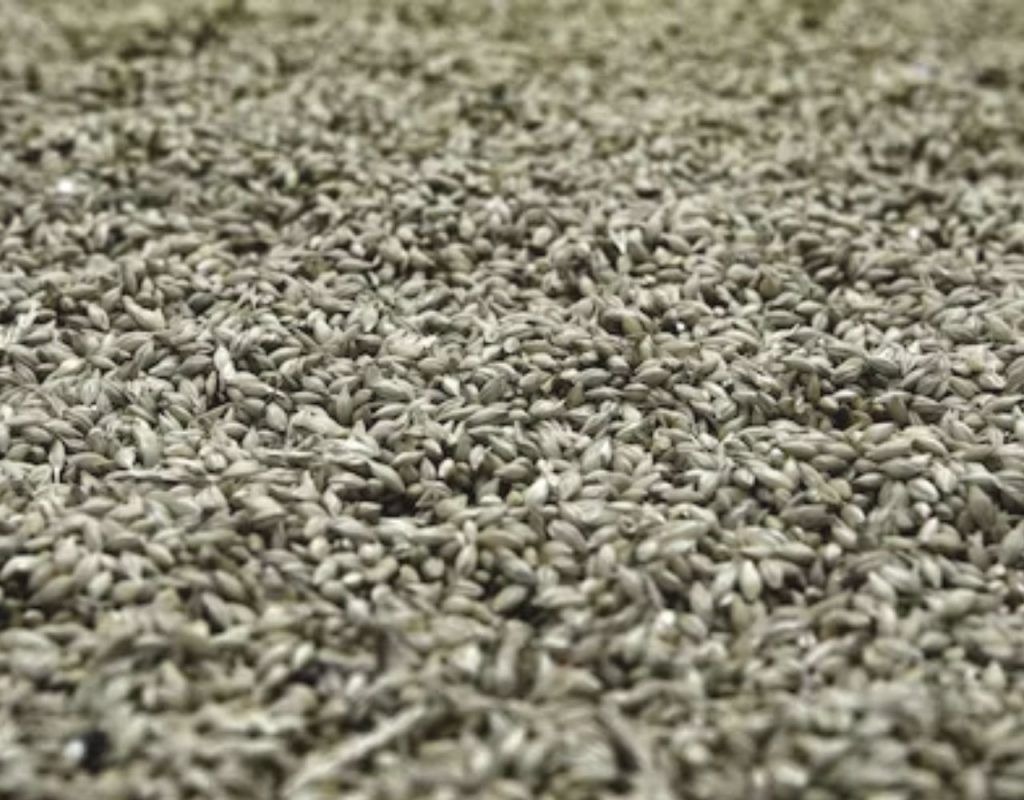
Our 3 Favorite Whiskey Recipes For Beginners:
The following recipes are quite easy to make at home. You will require the use of specialized tools in order to complete these recipes.
*** Please be advised that it is illegal to distill spirits at home in most countries. This guide is for informational purposes only. To find out if distilling is legal in your country, check out our article: Is Home Distilling Legal In My Country?.***
These are quite simplified recipes. If you’re not ofay with the whiskey making process I recommend you check out this article where we go step-by-step into how to make whiskey from scratch.
Recipe 1: Single Malt Whiskey
This recipe will allow you to make a home-made single malt whisky. Keep in mind that this recipe does require the use of more specialized equipment. You can make a blended single malt simply by adding more grain variants.
Equipment needed:
- Thermometer
- Distiller
- Oak spirals
- Fermentation container
- Grain grinder
- Cheese cloth
- Funnel with strainer and filter
- Air lockers
- Electric kettle
Ingredients:
- 17.6 lbs barley malt
- 8.45 gallons of water
- Yeast
Directions:
- Crush the grains into a coarse, rough mixture. Do not over process and turn it into powder. Also, keep the husk particles.
- Heat up the water in a metal container to 158 °F and slowly add the malt while continuously stirring.
- Bring the wash up to 149 °F and try to keep the temperature in that range for 90 minutes. Check the mixture every 10 – 15 minutes. You’ll notice the grains start to sink to the bottom. This signals the end of this process.
- Remove the lid and place the container in an ice bath to cool it down to 77 °F as fast as possible. This prevents bacteria from forming and prevents sour fermentation.
- Dilute the yeast as per the label.
- Pour the mixture into a fermentation container. Add the yeast. Keep stirring.
- Place the container in a dark room and add air locks. Ideally, the temperature in the room should range between 64.4 °F and 77 °F.
- Many factors will influence the speed of fermentation, but it should take anywhere from three to fifteen days. During this process, open the air locks and occasionally stir the mixture.
- Keep an eye on the air locks. If they do not bubble for two days, proceed to the next step.
You may notice that when the air lock ceases to bubble for two days, you may proceed to the next step. The steps that follow involve distillation. Pour the mixture into a distillation still using a funnel with a filter.
And, there you have it. Your very first batch of Scottish style whisky.
Recipe 2: Bourbon Whiskey
This recipe will allow you to make a home-made bourbon whiskey. Keep in mind that this recipe does require the use of more specialized equipment.
Equipment needed:
- 2 x 5 Gallon jugs
- 5 Gallon oak barrel
- Corona corn and grain mill
- Thermometer
- Funnel
- Distiller
- 10 Gallon copper still
Ingredients:
- 5.5 gallons of water
- 7 lbs corn maize
- 1.5 lbs of rye
- Distillers yeast
- Nut milk bags
- 1.5 lbs of barley
- Toasted oak chips
Directions:
- Combine the grains together and, using the corona corn and grain mill, grind the grains to a rough texture. Again, do not grind the grains too finely.
- Bring a pot of water to the boil and add the grain mixture. Stir continuously. Keep in mind that by adding the mixture to the water, it may bring down the temperature slightly. Stir until the mixture is almost at boiling point again.
- A sugary mixture will start to form. This is known as wort.
- Add one cup of distillers yeast to the mash.
- Split the mash between the two five gallon jugs. This is the initiation of the fermentation process which may last a few days. Several factors may influence this step in the process, including the type of yeast, the amount of sugar in the mash, and the temperature in the room. A room with a temperature of 80 °F will cause the fermentation process to happen a lot faster, as opposed to a room with a temperature of 55 °F.
- Add an airlock to the jugs.
- Between 18 and 48 hours after adding the yeast for fermentation, check the airlock on the jugs to see if any bubbles have started to form. Movement indicates that fermentation has begun. Keep the mixture in the jugs for about two weeks.
- After two weeks, check the airlocks again to see if there are still bubbles. If there is no movement, then the fermentation process is complete.
- If, however, you check the airlocks after 18 – 48 hours and there is still no movement, then check to make sure that the lids are sealed.
- Keep in mind that this process alone will not instill the bourbon flavor into the mixture. After distillation, the mixture is aged in new oak barrels. It is here that the true flavors are developed in the final product. For home brewers, the minimum time frame is three months. However, for a true bourbon flavor to develop, the mixture must be aged for much longer.
And, there you have it. Your very first batch of bourbon whiskey.
Recipe 3: Rye Whiskey
This next recipe will highlight the steps to making Rye whiskey.
Equipment needed:
- Grain mill
- Thermometer
- Heat source
- Air lockers
- Wooden stick
- Brew mash pot
- Cheese cloth
- Citric acid
- Iodine
- Siphon
Ingredients:
- 5 gallons of water
- 3.5 lbs of flaked maize (corn)
- 0.5 lbs of malted Barley
- 6 lbs of Rye Malt
- 1.5 lbs of rye
- Whiskey turbo yeast
Directions:
- Crush the malted barley to a course consistency.
- Pour the water into the brew pot and bring the temperature up to 165 °F.
- As soon as the heat source reaches 165 °F, turn it off. Immediately pour in 6 lbs of rye malt and 35 lbs of flaked maize.
- Keep stirring for roughly seven minutes.
- Keep stirring for 30 seconds at five minute intervals until the mixture lowers to 152 °F.
- After the temperature has lowered, add 0.5 lbs of crushed malted barley to the mixture.
- Now, stir for 30 seconds at 20 minute intervals until the temperature lowers to 70 °F.
- You are now ready to add the whiskey turbo yeast.
- Aerate the mixture. Pour the mixture between two containers back and forth. Continue this process for five minutes.
- Pour the mixture into your fermentation bucket, which should include a lid and air locks.
- Store the whiskey for one to two weeks during fermentation.
- After a week, remove a cup of clear liquid from the container and place it on a white plate. Add a few drops of iodine. If the liquid turns blue, then it still needs to ferment. The blue color indicates that the iodine has interacted with the starch. Repeat every other day or so until the liquid does not turn blue anymore.
- Strain some mash water through a cheese cloth to test the liquid’s PH balance. Ideally, it should be between 5.8 to 6.0. Tip: citric acid will bring the PH down and calcium carbonate will bring it up. Add accordingly.
- Your mash is now ready for distillation.
And, there you have it. Your very first batch of Rye whiskey.
Conclusion
We hope through this article you’ve gained an appreciation of the intricacies of the grains used in whiskey making.
How the strategic use of corn, barley, rice and other ajuncts can completealy change the end product.
We’d love to hear from you. Tell us in the comments below what grains you use in your favorite whiskey recipe?








